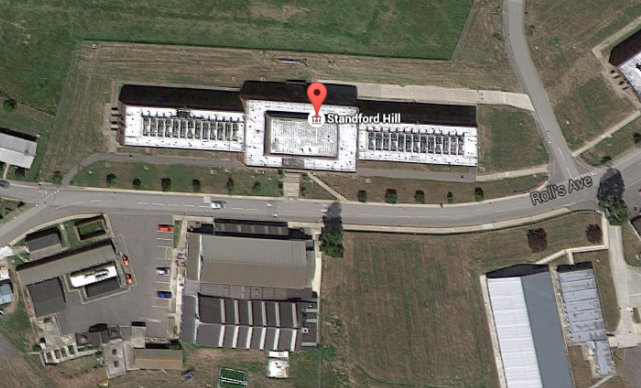This article originally appeared on Birmingham Eastside; written by Anna Noble, photography by me.
Inside a prison cell in Birmingham Library two prisoners were interviewed.
“My thoughts were so heavy that I couldn’t stand up straight.”
After losing his temper with a guy in a bar, Tony Abioye had found himself behind the imposing Victorian walls he had driven past without much thought, as a student and later a software engineer on the outside.
“Prison is like society within society. It has its own rules, its own regulations. Everything is different.”
One of the most striking differences being your living quarters. Your bed, a toilet, a barred window, a worktop with a kettle, and a locked door, each object less than an arm span from the next.
The cell presented is actually a single person cell but this is a common experience in prisons, due to overcrowding. In 2013-14 23% of prisoners were in cells designed for fewer inhabitants than they held.
Mental health in prisons
Beyond the initial shock of ending up in jail, Tony explained that self harm was common among prisoners. He added that if a prisoner is having problems they can talk to a prisoner who has been trained by the Samaritans, to be a listener. The listener will try and help the inmate deal with their problems.
With such restricted physical space and activities allowed in prison, means people have a lot of time to think. For example access to the library is restricted to three 20 mins sessions per week, in Belmarsh prison, London, or a 45 minute weekly timetabled session is provided at Birmingham prison.
The library is the only place where they have access to computers and very limited access to the internet through the prison service intranet. For comparison Ofcom reports show that the average person over the age of 16 says they spend over 20 hours online.
Neil, who was sentenced to the 3 years in prison for burglary said:
“You see a lot of people walking about talking to themselves, cos people can’t handle all the issues, like what they’ve got outside. Then something like that can play on their minds. But if you keep yourself busy you’re alright.”
This suggests the importance of educational and arts programmes in prisons, to ensure prisoners can use their time constructively.
The two inmates are in fact ex prisoners now playing a character as actors, as part of the Rideout arts project. They expressed their support for such programmes in making a real positive change to prisoners lives. Neil said:
“Working with arts organisations in prison stops you going back into a life of crime, pulls you into the theatre side of things.”
Category A – D: from “a prison inside a prison” to a “holiday camp”
A category A prison is a maximum security prison for the most violent and vulnerable prisoners Neil said:
“It’s a prison inside prison – you’re not moving, you’re not going nowhere.”
He added they are not used for punishment:
“No, they put the really dangerous people in there.” and described it as being “Like a step down from being sent to Broadmoor [hospital].”
Neil mentioned Belmarsh prison as an example of this prison inside prison structure.
In contrast to this Neil talked about his time spent in a category D prison on the Isle of Sheppey, called Standford Hill. He said the site has two category B blocks facing opposite the D building. The category D building has an open gate, “normal fences”, and a “little hut where you sign in.”

“Standford Hill looks like a holiday camp. You’ve got keys to your own door, your cell door is just a normal door. You’re allowed out to a certain time of night, walking round the grounds. You can go out and work during the day.”
Category D prison is for people who are about to be released after spending a long period of time in prison. It helps them transition back into the outside world. This kind of environment makes it’s very easy to run or escape,
“If you want to walk off or climb over the fence, you can”
But as Neil points out you are going to get caught, sent back to the closed prison and lengthen your time inside.
Neil explained what happened in Standford Hill if you were found with anything that was completely banned from the prison.
“They’d [the guards would] go in the cell tell em to get your stuff together. Get it all picked up and would take the prisoner, walk em out down to the gate and then straight across the road into the locked down prison. No bus or transportation between the two”
It is clear that being in category D is privilege, a privilege that can and will be revoked if you misbehave.
The prisoners interviewed are part of the Go to Jail exhibition at the Library of Birmingham.
